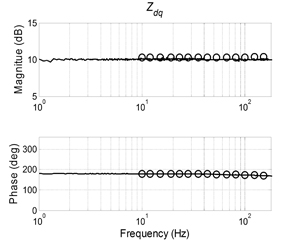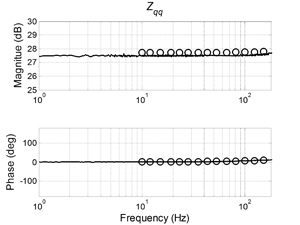LIBRARY
Three-phase AC System Impedance Measurement Unit (IMU) using Chirp Signal Injection
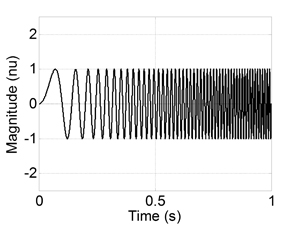
The frequency sweep method widely used in literature takes a long time to extract the whole impedance curve, especially at low frequency range. This paper proposes using a chirp signal, which is one kind of wide bandwidth signal, to increase the measurement speed.
Figure 1 shows an example of chirp signal. Compared to other wide bandwidth signals, it has a low crest factor and a controlled spectrum shape.
As a wide bandwidth signal, the chirp signal spreads the energy over a frequency range, which results in a lower SNR compared to the sinusoidal signal used in a frequency sweep. A corresponding data procedure used with the chirp signal is developed. It includes oversampling the raw signals to increase the analog-to-digital conversion resolution, cross correlation to remove the non-correlated noise, and frequency domain averaging to further improve the signal SNR. The method is tested with both linear and nonlinear load. Figure 2 shows the measurement result of a diode rectifier when compared to the simulation result, which is extracted using a frequency sweep method. The two results show a good match.
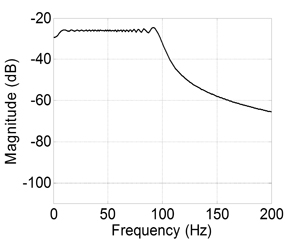
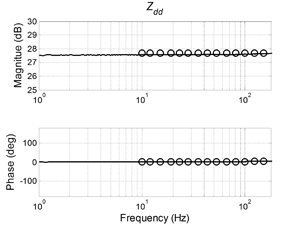
(Solid line: measurement result; circles: simulation result).
